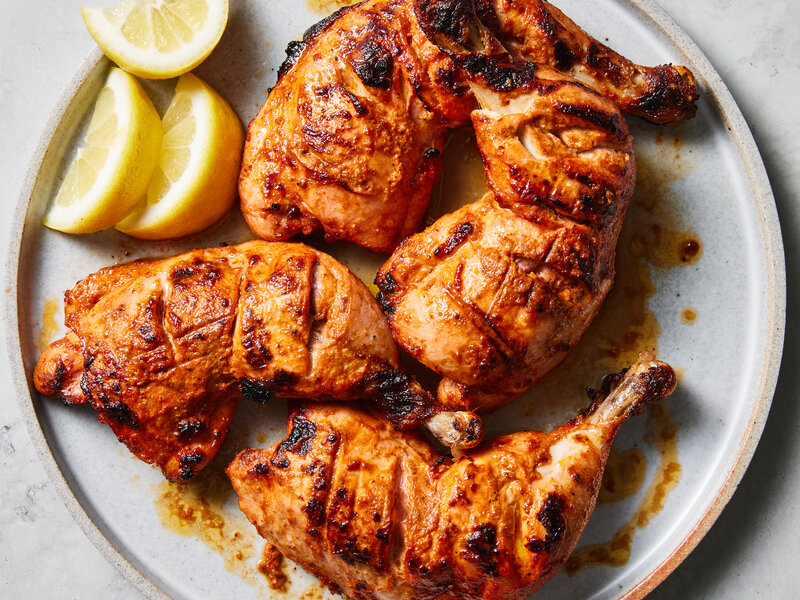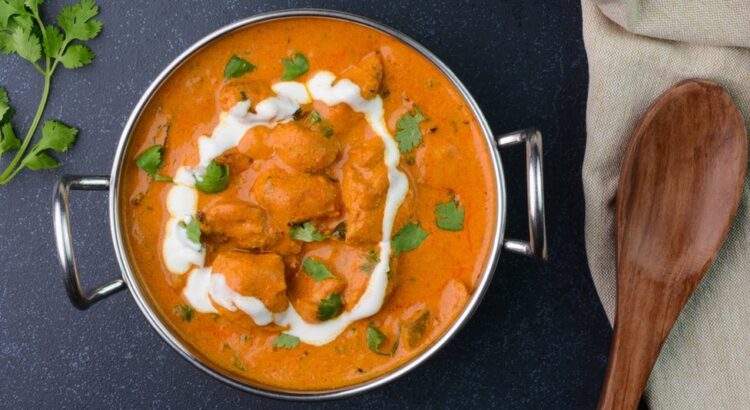The start of 2024 was boisterous in India because of a big court case. It might not be something you would immediately think of when thinking about big court cases, but two men challenged each other on who came up with the recipe for butter chicken. The court case received nationwide attention, which might seem a bit odd considering it is just about the recipe for a dish. The thing with this case though is that it is also about what is Pakistani culture and what is Indian culture. To understand why this case is so important to the people of India and of Pakistan we have to go back all the way to the invention of the dish in 1920.
Origin of the butter chicken

In the year of 1920 the restaurant Moti Mahal in Peshawar was founded by Kundan Lal Jaggi and Kundan Lal Gujral. This city nowadays lies in the northern part of Pakistan. The two men came up with a new recipe, one that immediately rose to popularity: butter chicken. For those who are unfamiliar with butter chicken, it is tandoori chicken in a creamy tomato sauce with butter. This way the dried out tandoori chickens were still sellable. The cooks of Moti Mahal became mostly famous not only for the butter chicken, but also for their modern cooking style at the time. The restaurant stayed in Peshawar until 1947.
Gujral and Jaggi both fled to Delhi, India, right after the Great Partition in 1947 when the British divided most of South Asia into Pakistan for the Muslim community and India for the Hindu community. When they moved there they rebuilt their restaurant and used ‘inventors of the butter chicken’ in their advertisement. The restaurant started out small in the neighbourhood of Daryaganj, but over the seventy years of its existence, it is now one of the larger food chains in India. Until last year it was clear to everyone who came up with the dish and that it was Indian.
The inventor case

who made the claim for butter chicken at
shark tank India 2023.
About a year ago the discussion started on if butter chicken was an Indian dish or a Pakistani dish. In an episode of Indian Shark Tank the grandson of Kundan Lal Jaggi was trying to find investors to expand his own Daryaganj franchise. He also said that it was his grandfather that came up with the dish and left out that it was a group invention. Jaggi was a Pakistani and according to his grandson he came up with the dish before he even came to India, therefore it is a Pakistani dish. He was referring to the restaurant in Peshawar with the same name, Moti Mahal. The discussion of the origin of the dish might seem a bit odd to people from outside of Pakistan and India, but there is a good reason to why this is such a heated case.
To understand why the debate is so heated we have to go back to the Great Partition in 1947 when the British divided British India in to Pakistan and India. The Muslim community and the Hindu community used to live under the British during the time it was a colony to Britain. Then all of a sudden they got their own countries, causing the rise of new forms of nationalism and a shared cultural/culinary history. With this rise in nationalism also came many discussions to what was actually Pakistani and what was Indian. They lived in the same country for a long time and many things became part of both cultures. While the discussion surrounding butter chicken appears to be part of this process, it might not be as distinctly Indian or Pakistani as people think.
Catering to a broader audience
To answer this question, it is relevant to look at the dish itself. Creamy sauces and forms of gravy are rare in both traditional Pakistani Dishes as well as Indian cuisine. In both cuisines, meat is often dried or grilled. This is not the case with butter chicken, the tandoori chicken is but the sauce obviously isn’t. The use of butter and the amount that is used for butter chicken is very uncommon for the region that this dish was created. Moti Mahal was also known for a new style of cooking that was unknown to the region as mentioned earlier. It is highly probable that at Moti Mahal the target audience was British people. Many British people lived in Peshawar, where Moti Mahal was located. The butter chicken might be a result of colonialism and the mix of British commodities at the time.

These kind of mixtures of cultures in Indian cuisine is also seen in the United Kingdom. The popular chicken tikka masala dish in England is also a reinvention of a common Indian dish to better appeal to the taste of the British. The story goes that this dish was created because a British customer in the 1970’s was complaining that the classic Indian chicken dish was too dry. The owner of the establishment cooked up a tomato sauce and poured it over the ‘dry’ chicken and so the dish was created.
The question today still remains, is butter chicken Pakistani, Indian or maybe a dish made for the British audience. There might never be a clear answer to that question, but the fact remains that the British did influence the Indian kitchen quite a lot while they were in India. The old owners of Moti Mahal can also still say they came up with the dish, they were the very first to put this on a menu. Those are the facts we have, for the grandchildren of Kundan Lal Jaggi and Kundan Lal Gujral, they have to wait and see how the court case will end.
Further reading:
- ‘Chicken Tikka Masala, Flock Wallpaper, and “Real” Home Cooking: Assessing Britain’s “Indian” Restaurant Traditions’, Lizz Buettner.
- ‘Great partition: the Making of India and Pakistan’, Yasmin Khan.
- ‘Curry: A Tale of Cooks and Conquerors’, Lizzie Collingham.
Written by: Bart van Oostrom
